|
|
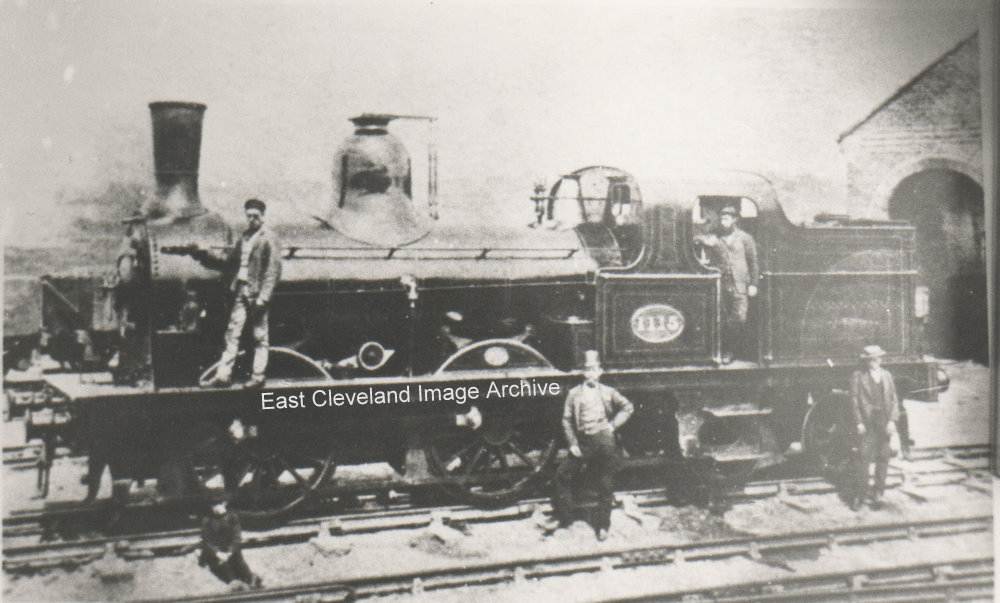
Another proud locomotive crew (and some extras!) stand with their gleaming charge! The location is believed to be outside a Goods Shed between 1875 and 1883. Geoffrey Allen advises us: ”The locomotive is an 0-4-4WT (Well tank) from the Edward Fletcher designed BTP (Bogie Tank Passenger) class and was new from Darlington Works in June 1877. The location is Loftus and one of this class was stationed at Carlin How shed for working the local passenger service. With the introduction of the O Class 0-4-4T’s between 1894 and 1901 many of the BTP’s were deemed surplus to requirements and as a lot of the loco parts could be re-used, 60 were rebuilt at York and Darlington works as NER 290 Class (LNER J77)0-6-0T’s. This loco number 1115 was rebuilt at York in December 1901 and was not withdrawn (as 68409) until the 6th of November 1959 from Hull Dairycoates shed when it was 82 years old!
Image courtesy of the Pem Holliday Collection; with thanks Simon Chapman and Geoffrey Allen for the updates.
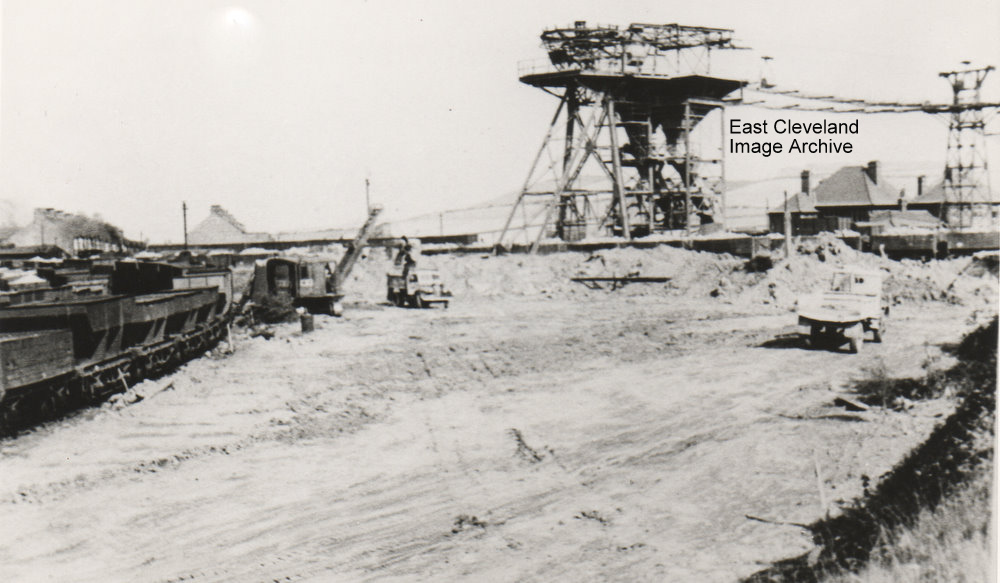
Based on a possible recognition of ”the buckets” in this image, it was wondered if this was the construction of the new road into the site; it was adjacent to the aerial rope-way and the stanchions remained as a lighting column after completion of the road. Now known to be the work undertaken by Wimpeys in August 1949.
Image and confirmatory information courtesy of the Pem Holliday Collection.
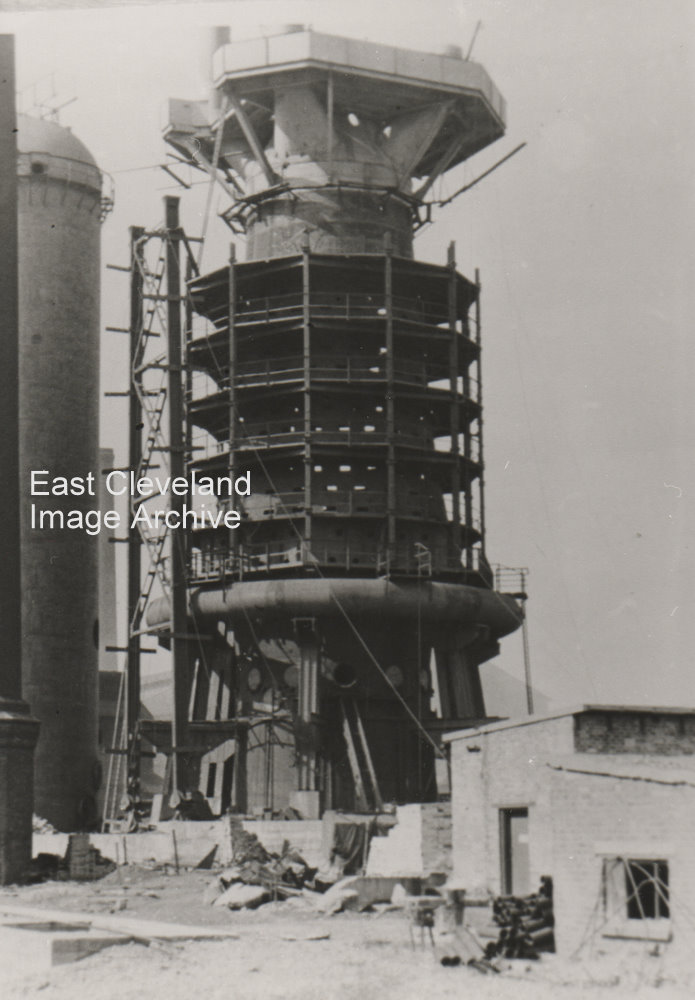
The Archive believed this was the building of No. 5 blast furnace and since confirmed by Eric Johnson; it looks strange without it’s clothes on! Arthur Ormrod tells us: ”The tall cylinders then would be the ”Cowper stoves, in which cleaned blast furnace gas is burned and used to heat the incoming cold blast, which then leaves as hot blast. These regenerative heat exchangers were invented by Edward Cowper in 1857 and are still used in blast furnace plants today.” Half-way along this bank of units was a long pipe ending in a thin rubber pipe and daily a sampling of the blast-furnace gas to test it for calorific value (among other things) was undertaken.
Many thanks to Eric Johnson and Arthur Ormerod for the updates.
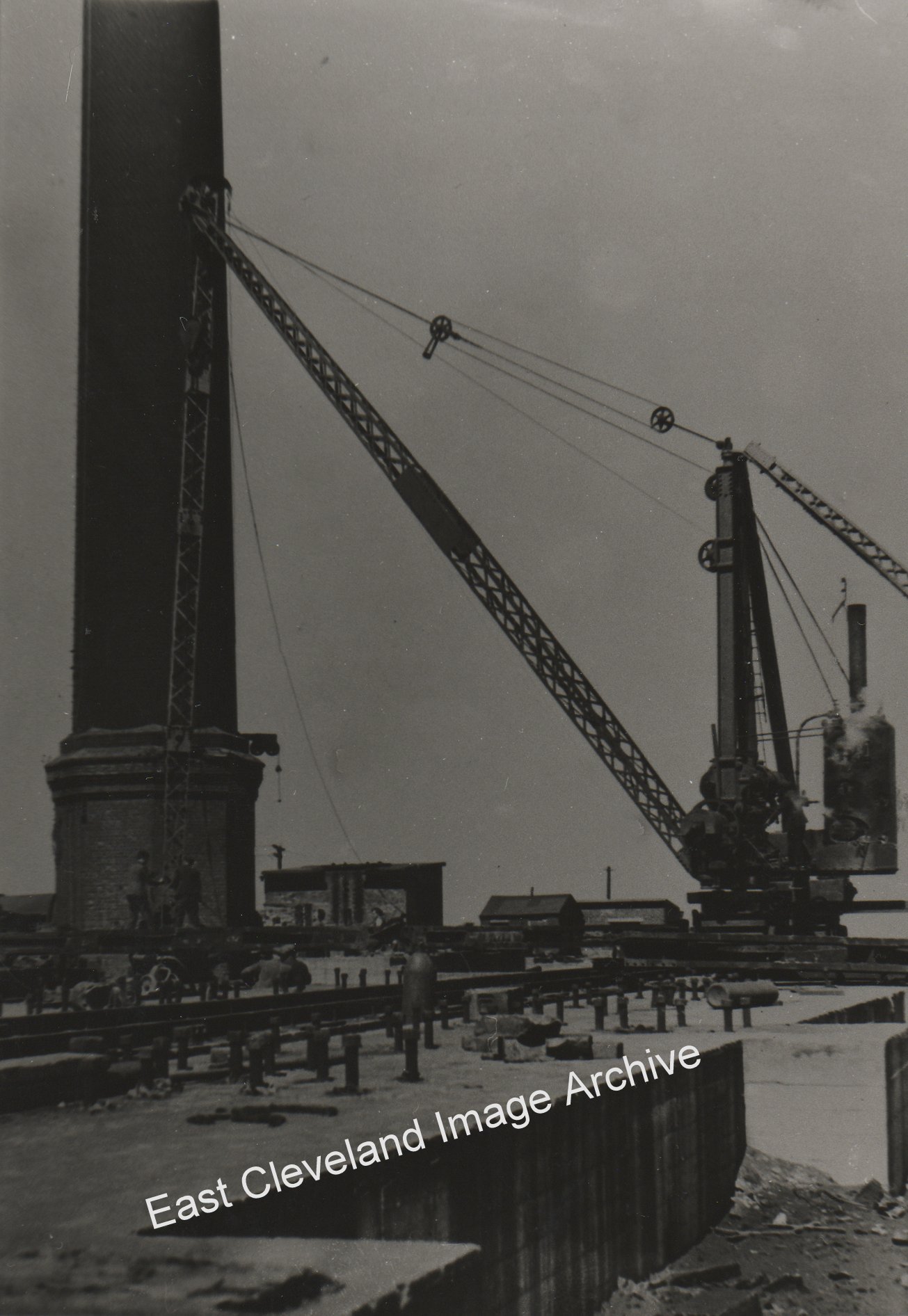
Another unidentified image and this time from much earlier. It appears to be the construction phase of an industrial plant, possibly a steel plant. A beautiful steam crane is being used. Help would be appreciated in trying to identify the period and hopefully the location.
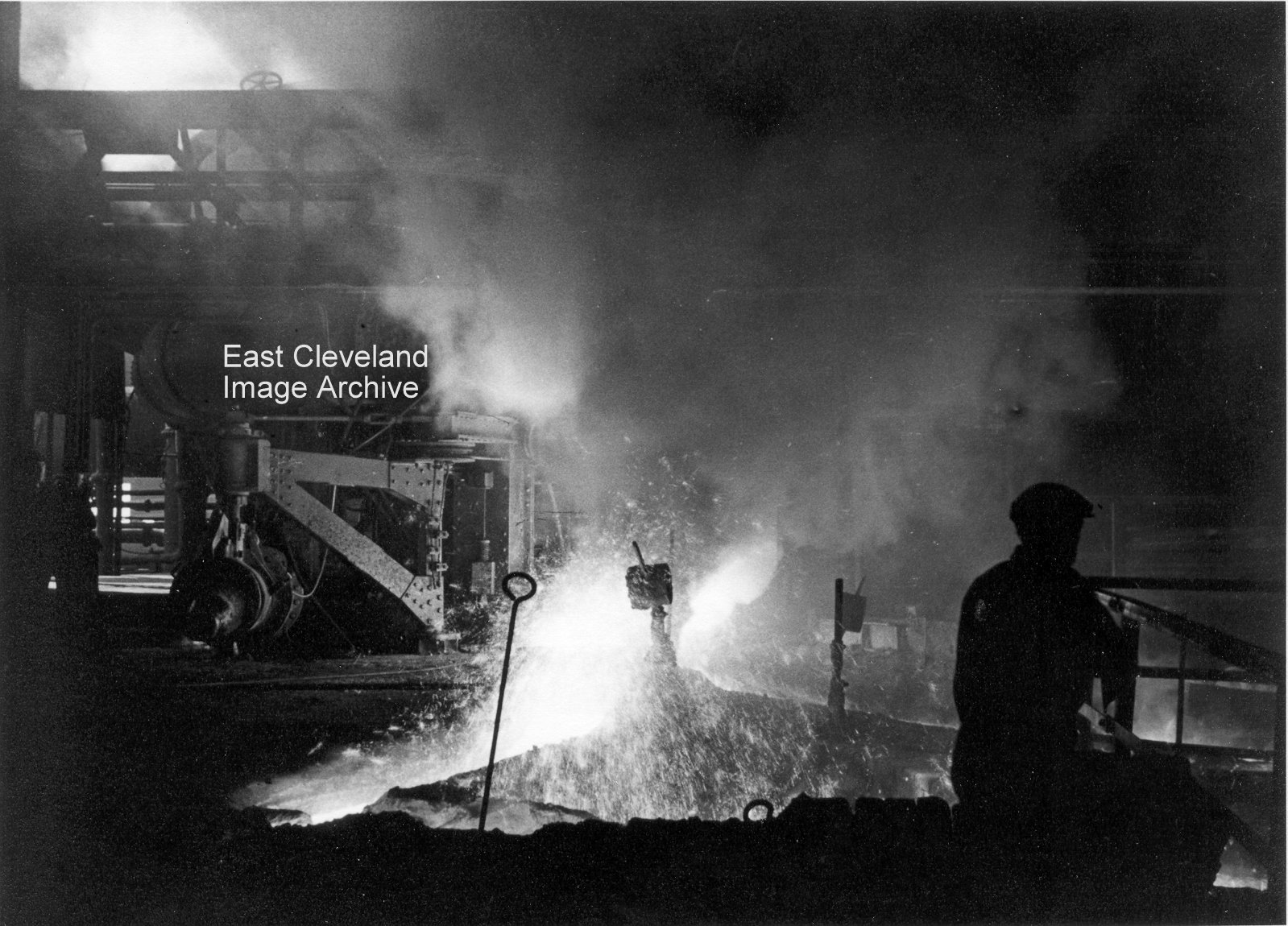
This is a classic shot! It evokes all the memories of what used to make Britain Great. People who worked in Steel for years and looking at this image can still recall the thrill of tapping time on the furnaces at Skinningrove – once you’ve got Steel in your blood it never leaves you! They can feel the heat from the metal in front of the worker on the right and can still remember how cold their back used to feel, when standing and watching the fettling process as a furnace was tapped. Eric Johnson tells us: “The ‘mud gun’ (used to stop the flow of iron when tapping was finished) can be seen on the left; lit by the light from the molten iron.” Above that and running like a band across the image is the ”bustle” which carried the blast furnace gas to feed the furnace. The flag-like objects sticking up in the image were stoppers to stop (or allow) the flow of metal along the runners and into the pots. One of them will be a skimmer used to divert any slag running on top of the iron into a slag pot. This was no place for a stranger to the business – hot, gassy and easy to get in the wrong place! Arthur Ormrod advises us: ”A correction to the comments if I may. The bustle carried the hot blast, preheated air, which was fed into the furnace through the tuyeres, the blast of the blast furnace. Blast furnace gas, carbon monoxide, is collected from the top of the furnace, cleaned, and then used as a fuel in the works, including being burned to heat the hot blast.”
Many thanks to Eric Johnson and Arthur Ormerod for those updates.
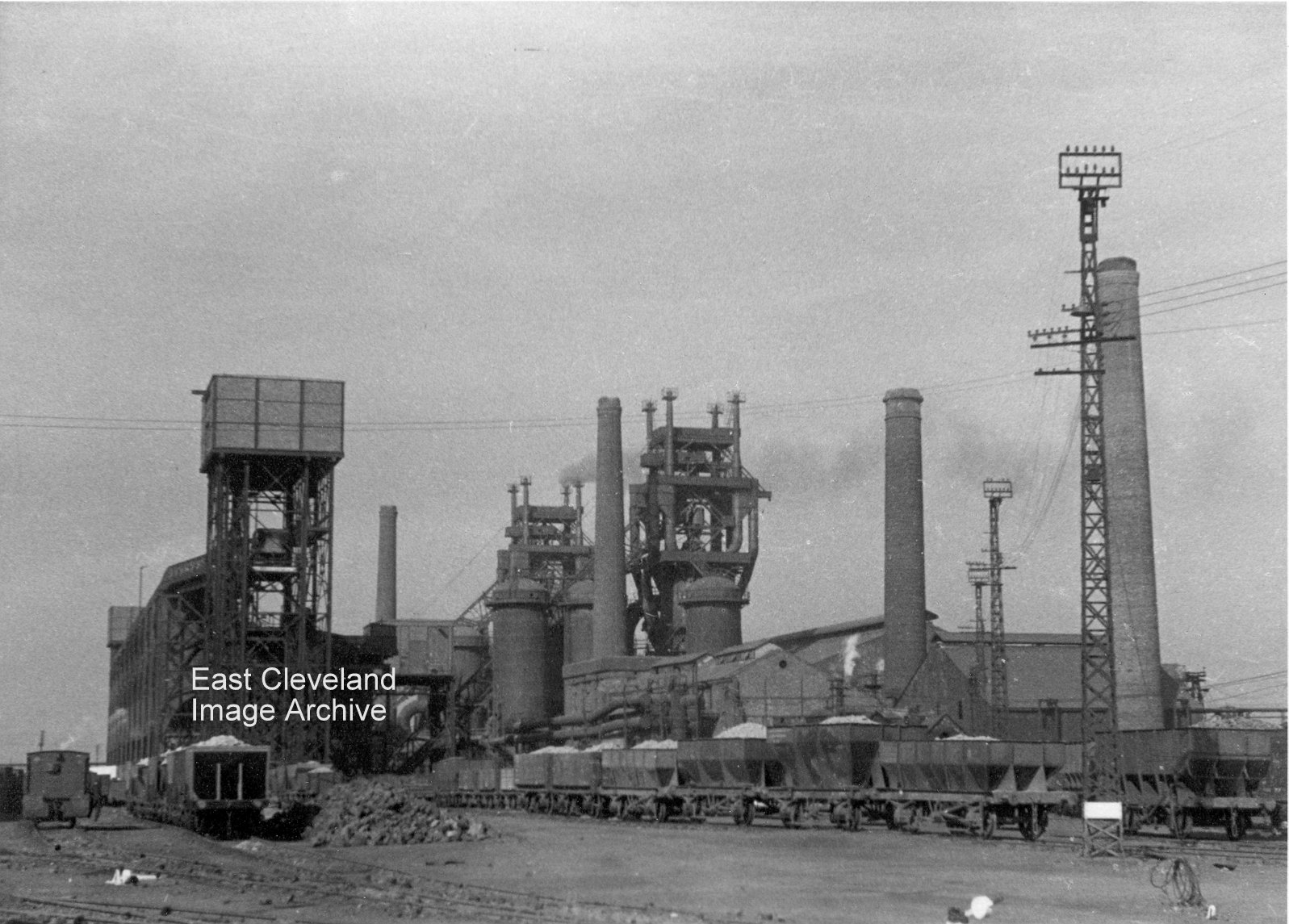
This is an image of the Bessemer plant at the Cleveland Works; they were in pairs and one was always producing basic iron and the other ferro-manganese (which was used for alloying the steel at Skinningrove).
Rob Proctor informs us ”The word “Bessemer” could cause some confusion to the uninitiated reader , as it is a steelmaking process whereby air is blown through the liquid iron .The blast of air oxidised the impurities which as they burnt off conveniently raised the temperature of the metal so that the finished steel could be poured out . The vessel resembled a “tulip” sat on a pair of trunnions which could be tilted to the horizontal for the addition of hot metal and then turned into the vertical for the blow. The reason for name “Bessemer” for a blast furnace plant was because either one or two of these units had been sited there in the past”.
Andrew Mains advises: ”I worked on these two furnaces in the 80’s and early 90’s before they were shut down. There were two furnaces going together, but this changed when demand dropped, so it went down to one furnace operation. They were named no 4 and no 5 furnaces and the plant name was changed to Cleveland Iron.”
Arthur Ormrod tells us: ”The survival of the Bessemer blast furnaces was down to their, relatively, small size and their consequent suitability for smelting manganese and ferromanganese. Manganese was a metal of strategic importance, it was vital in both making steel and in hardening steel, armour-plate for example. Consequently, there was a government supported cartel to secure it’s manufacture within the U.K. Dorman Long was one of, originally five, later four, iron making companies which kept a small blast furnace available for the smelting of ferromanganese. It required higher temperatures than iron smelting and consequently the wear on the furnace was greater. One by one the other plants closed down, Darwin & Mostyn first, then Lancashire Steel and Workington, both by the BSC, leaving the Bessemer blast furnaces as the sole source of manganese smelting in the UK and that is why this relatively elderly plant survived into the 1990′s. Today, manganese is smelted in electric furnaces.”
Many thanks to Rob Proctor, Andrew Mains and Arthur Ormerod for those updates.
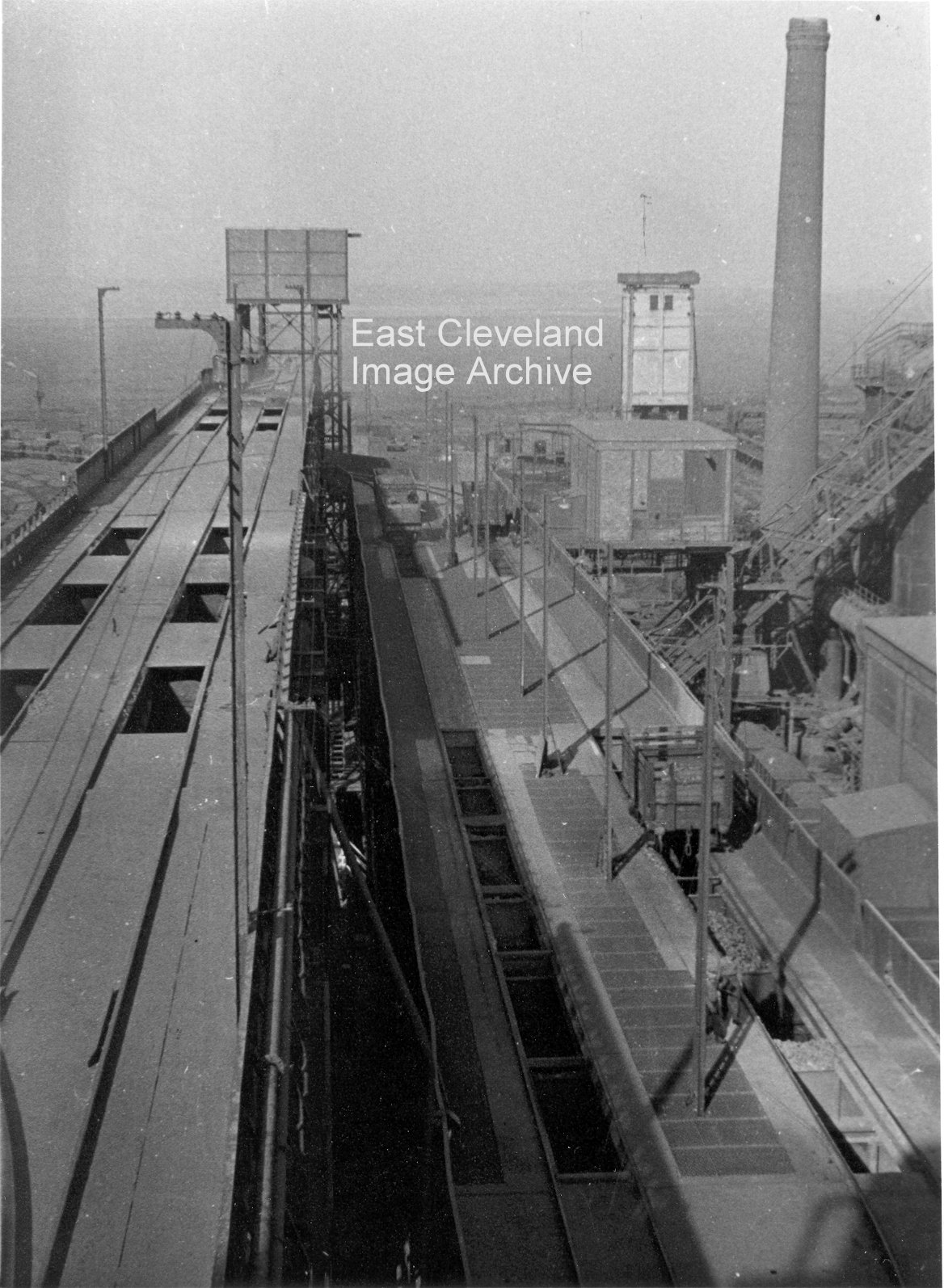
We believed these were the Clay Lane furnaces at South Bank! However we have been advised by Arthur Ormrod: ”These are not the South Bank furnaces, these are the two Redcar furnaces of Dorman Long, rebuilt in 1953. The hi line bunkers to the left, under which the scale cars operated, are of the traditional rail served type on which hopper wagons discharged the raw materials into the bunkers. The structure top left is a vertical wagon hoist, used to raise wagons up to the hi line. The raised brick structure straddling the lattice-work skip hoist, right centre, housed the skip hoist motors which raised the raw material skips to the furnace charging platform. The Clay Lane bunkers were roofed over and were serviced by conveyor belts and trippers. The lattice-work skip gantries on the Clay Lane furnaces were at a steeper angle than those shown here and the hoisting mechanisms on these furnaces were housed in an extension of the cast house, directly under the skip hoist.”
Many thanks to Arthur Ormerod for that excellent update.
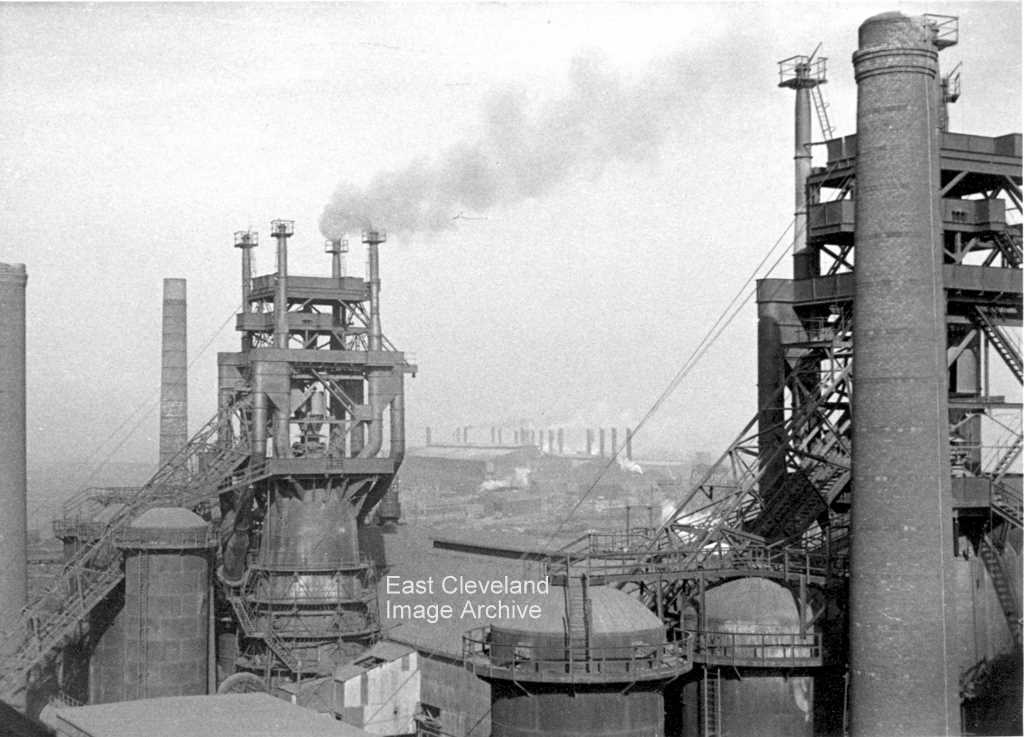
The Archive had a series of photographs which were definitely not of Skinningrove Iron and Steel Works; we needed help in identifying them. We are now told: ”This image was taken looking through numbers 3 and 5 Bessemer Plant Blast Furnaces with the Cleveland South Plant (Redcar) Melting Shop chimneys in the background. There was a North and South plant but when the North plant was demolished they installed two electric arc furnaces.”
Image courtesy of the Pem Holliday Collection; with thanks Robert Doe, Eric Johnson, Simon Chapman and particularly Iain Hunt for correcting our details.
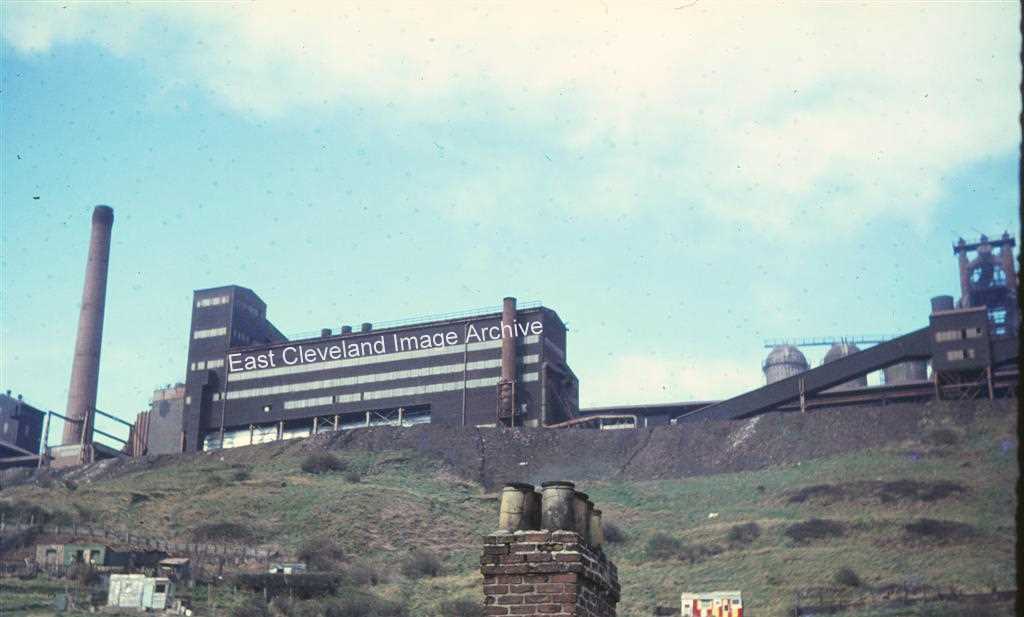
A view of the steel works from High Street, Skinningrove.
Image courtesy of Pat Sparkes.
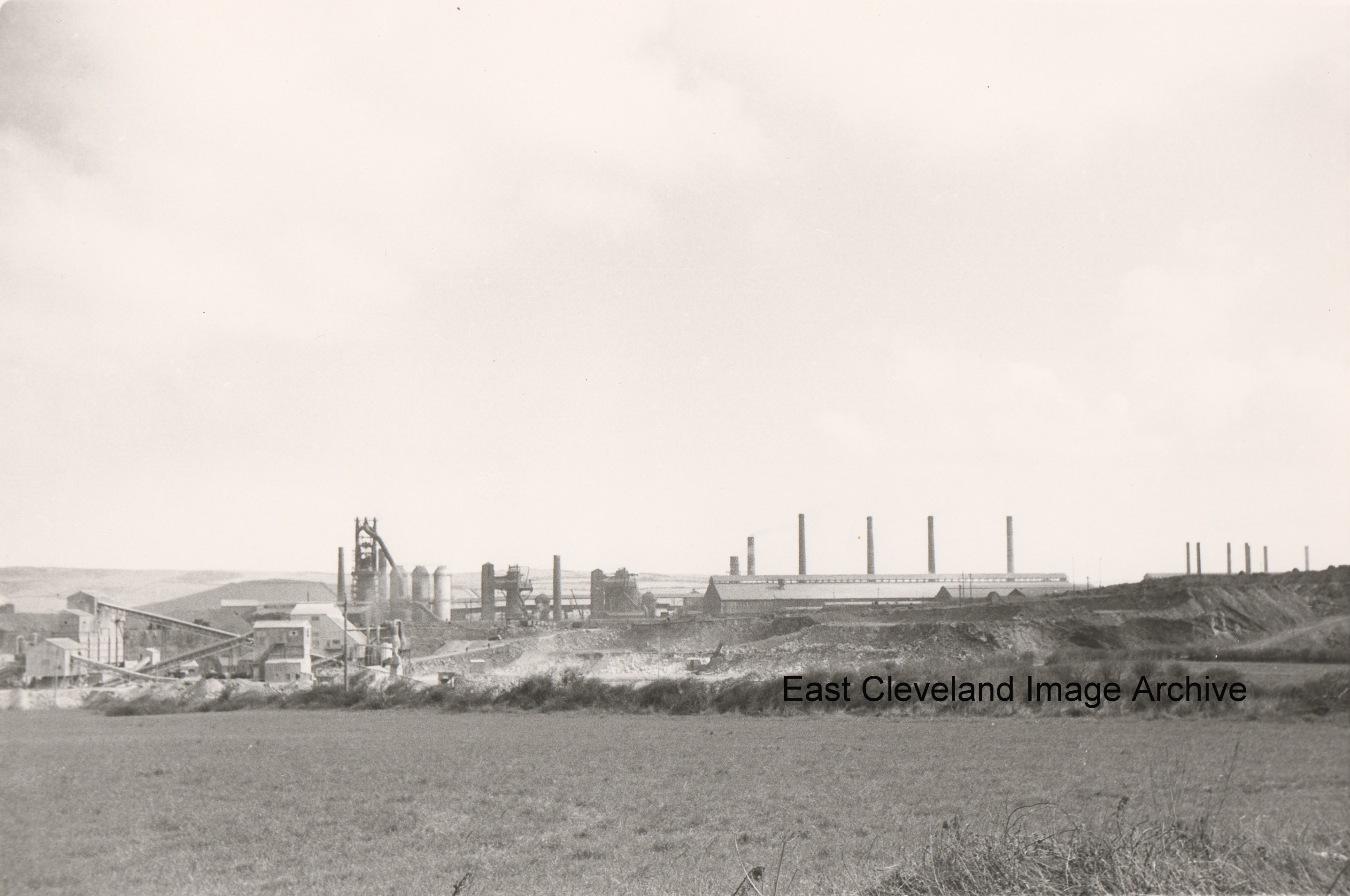
Another view of Skinningrove Iron and Steel Works from a nearer vantage point, clearly showing the slag processing plant; also visible are three blast furnaces.
Page 19 of 20« First«...10...1617181920»
|
|










Recent Comments